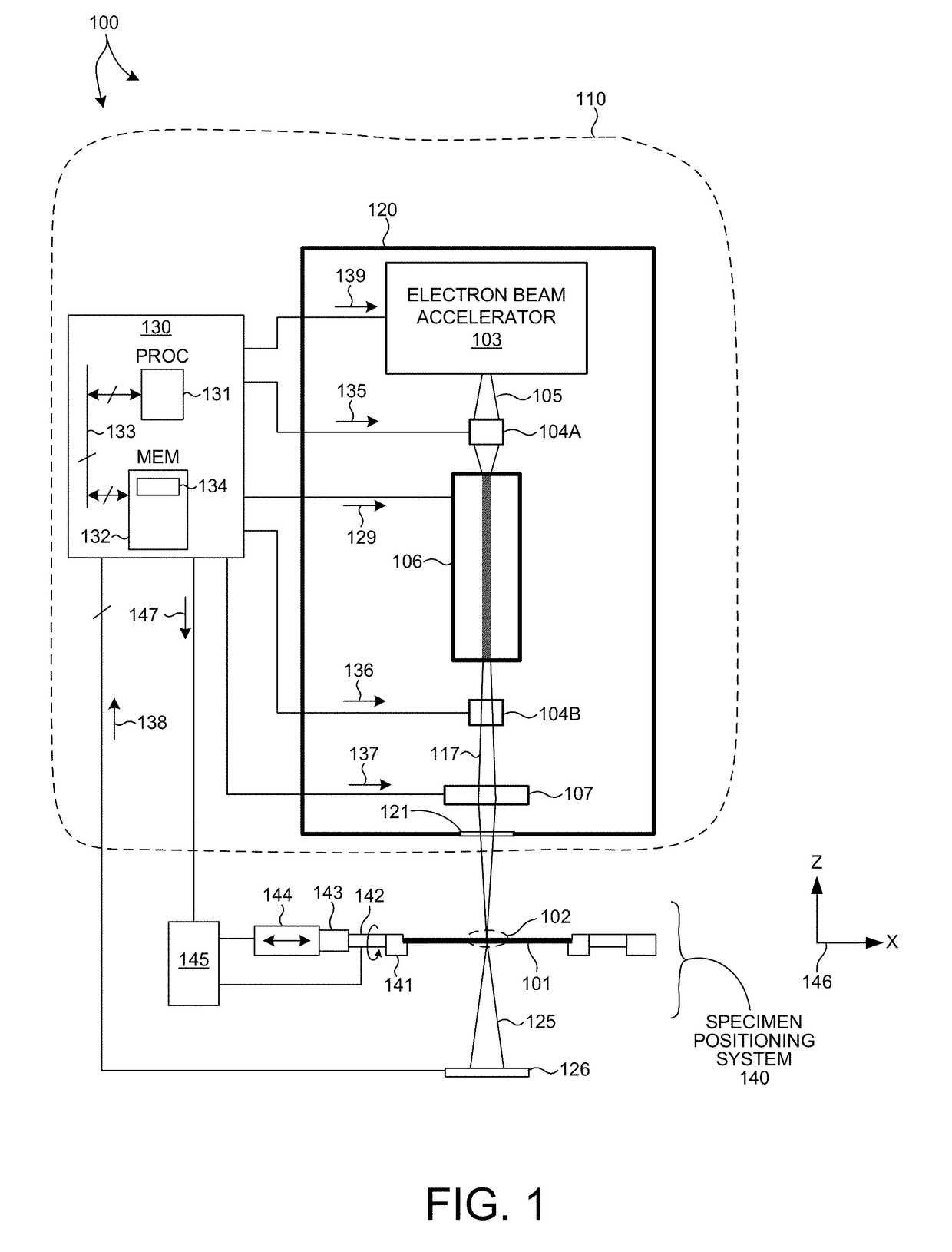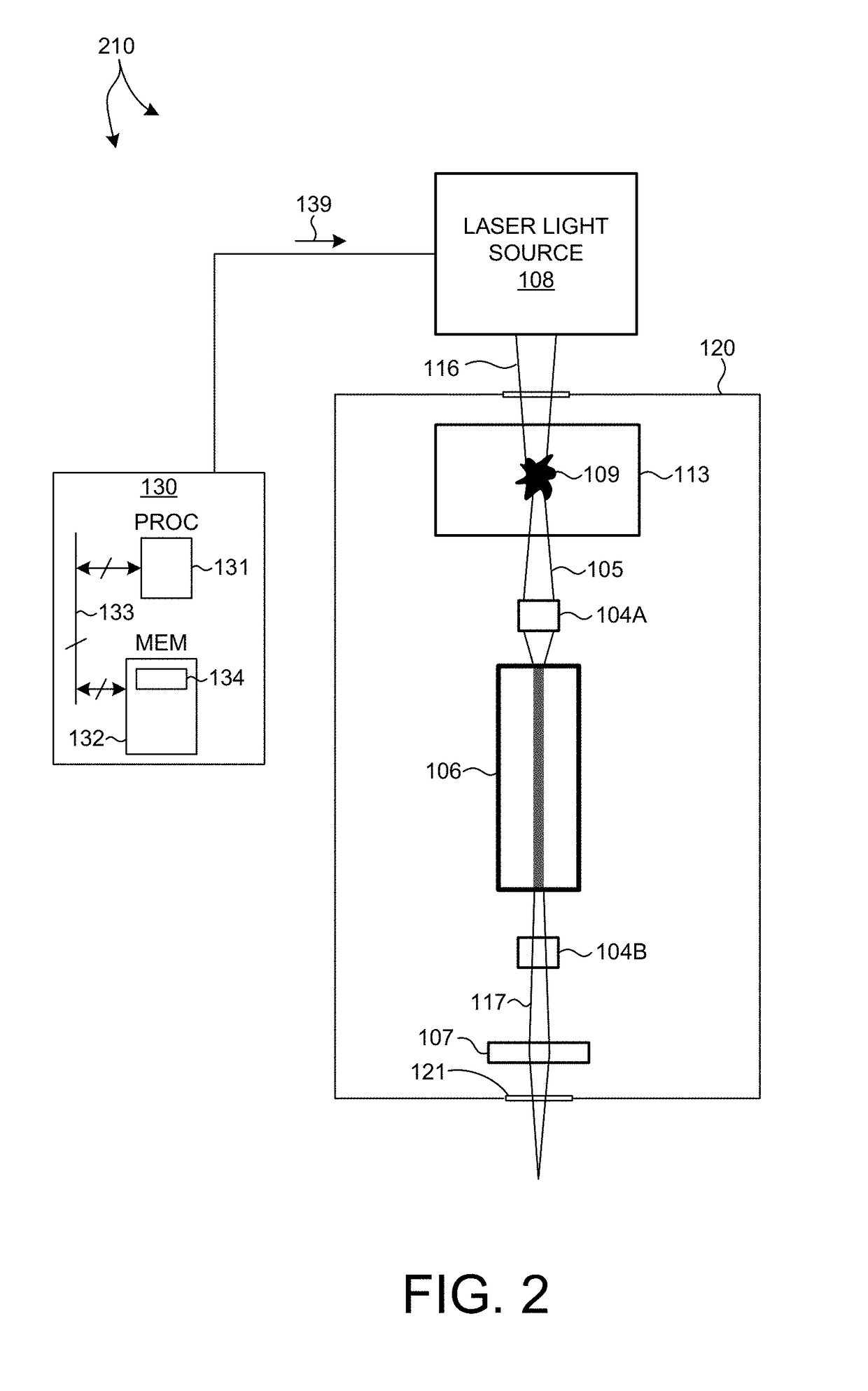Compac X-ray source for semiconductor metrology
a semiconductor and x-ray source technology, applied in the field of metalrology systems and methods, can solve the problems of difficult optical radiation penetration to the bottom layer, difficult characterization, and more difficult characterization, so as to improve measurement performance, low noise, and low noise
- Summary
- Abstract
- Description
- Claims
- Application Information
AI Technical Summary
Benefits of technology
Problems solved by technology
Method used
Image
Examples
embodiment 180
[0057]In some other embodiments, undulator 106 is a semiconductor based dielectric undulator. FIG. 5 illustrates a magnetic undulator based on a dielectric structure. Undulator 180 includes dielectric grating structures 181 and 182 placed on opposite sides of a stream of electrons 105. The gratings are aligned such that an alternating electric field is generated along the length of the undulator 180 when high intensity laser light 183 is passed through the dielectric structures 181 and 182. The stream of electrons 105 passing through undulator 180 is forced to undergo oscillations, and thus radiate energy. While dielectric undulators have relatively low undulator deflection parameter values (e.g., K<0.01), dielectric gratings can be produced with periods on the order of several microns. Thus, a dielectric undulator structure can generate very short wavelength radiation with a very small structure. For example, electron beam energy of 110 MeV is needed to generate x-ray radiation at ...
embodiment 190
[0061]FIG. 6 illustrates an optical undulator based on a four-mirror optical resonator 191 including focusing mirror elements 191A-D. Laser light 193 from a laser light source 192 is pumped into optical resonator 191 to generate a standing wave in the middle of the optical resonator 191. The standing wave creates an alternating magnetic field. The stream of electrons 105 passing through the standing wave in the middle of optical resonator 191 is forced to undergo oscillations, and thus radiate energy. Although, optical resonator 191 is described with reference to a four-mirror optical resonator, in general, any optical resonator structure may be contemplated.
[0062]In one example, light generated from a 10 kW phase-locked CO2 laser with a wavelength of 10.6 micrometers is inserted into an optical storage cavity with a continuous wavelength circulating power of 3 Gigawatts. At focus, the beam radius is 45 micrometers, and the laser strength parameter of the optical cavity, a0, is 0.1....
PUM
 Login to View More
Login to View More Abstract
Description
Claims
Application Information
 Login to View More
Login to View More - R&D
- Intellectual Property
- Life Sciences
- Materials
- Tech Scout
- Unparalleled Data Quality
- Higher Quality Content
- 60% Fewer Hallucinations
Browse by: Latest US Patents, China's latest patents, Technical Efficacy Thesaurus, Application Domain, Technology Topic, Popular Technical Reports.
© 2025 PatSnap. All rights reserved.Legal|Privacy policy|Modern Slavery Act Transparency Statement|Sitemap|About US| Contact US: help@patsnap.com



